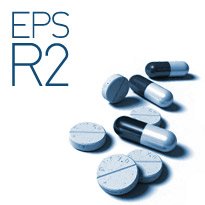NHS Bury Clinical Commissioning Group has deployed the Electronic Prescription Service Release 2 to all of its practices and has the best usage figures in the country.
EPS R2 allows the transmission of digitally-signed prescriptions instantly from GPs via the Spine to pharmacists.
All 33 practices in the Bury CCG area are live with the service using INPS’ Vision clinical system.
Dr. John Hampson, Bury GP and NHS Bury CCG’s clinical lead for IM&T, said Health and Social Care Information Centre data showed that the CCG was ranked top in the country for its use of EPS.
Bury hit 42% of prescriptions sent electronically in April and Dr Hampson’s practice is sending 80% of its prescriptions electronically. He believed that the greatest benefits came when an area hit 60%.
Bury got approval to roll out EPS R2 in early 2011. Dr Hampson’s was the first practice to go live in March 2011 and the final practice went live in March 2013.
He believed the CCG’s strategy of rolling out the service to GPs and pharmacies area by area helped to improve uptake.
“We did areas of the town at the same time so that pharmacists became accustomed to dealing with prescriptions at scale, if you only get one or two you never get the hang of it,” he said.
“It became mainstream pretty quickly and that’s made a big difference.”
Dr Hampson said adopting EPS R2 involved process change for both pharmacists and practices.
“Fortunately, having the same clinical system across all sites means it became available at the same time and we’ve been able to progress steadily across the patch.”
At first they were experiencing a lot of problems with ‘missing prescriptions’, but as everyone gained experience of the system these dropped dramatically. The CCG also recently got access to a new HSCIC tool – ‘EPS Online Prescription Tracker’.
Dr Hampson said the new service saved the practice time and resources with less processing and handling of paper and fewer lost prescriptions.
There was less footfall at reception as patients could have prescriptions sent directly to a pharmacy from a phone consultation.
GPs’ relationship with pharmacists had also improved as they worked together on the programme, he added.
Dr Hampson said that the only major issue with the electronic service was that, for legal reasons, it could not be used to prescribe controlled drugs
There are 732 EPS R2 enabled practices and more than 9,500 enabled pharmacies, up from 283 practices and 6,300 pharmacies last September.
About 5m R2 prescription messages have been sent to date and 1.7m patient nominations set.

